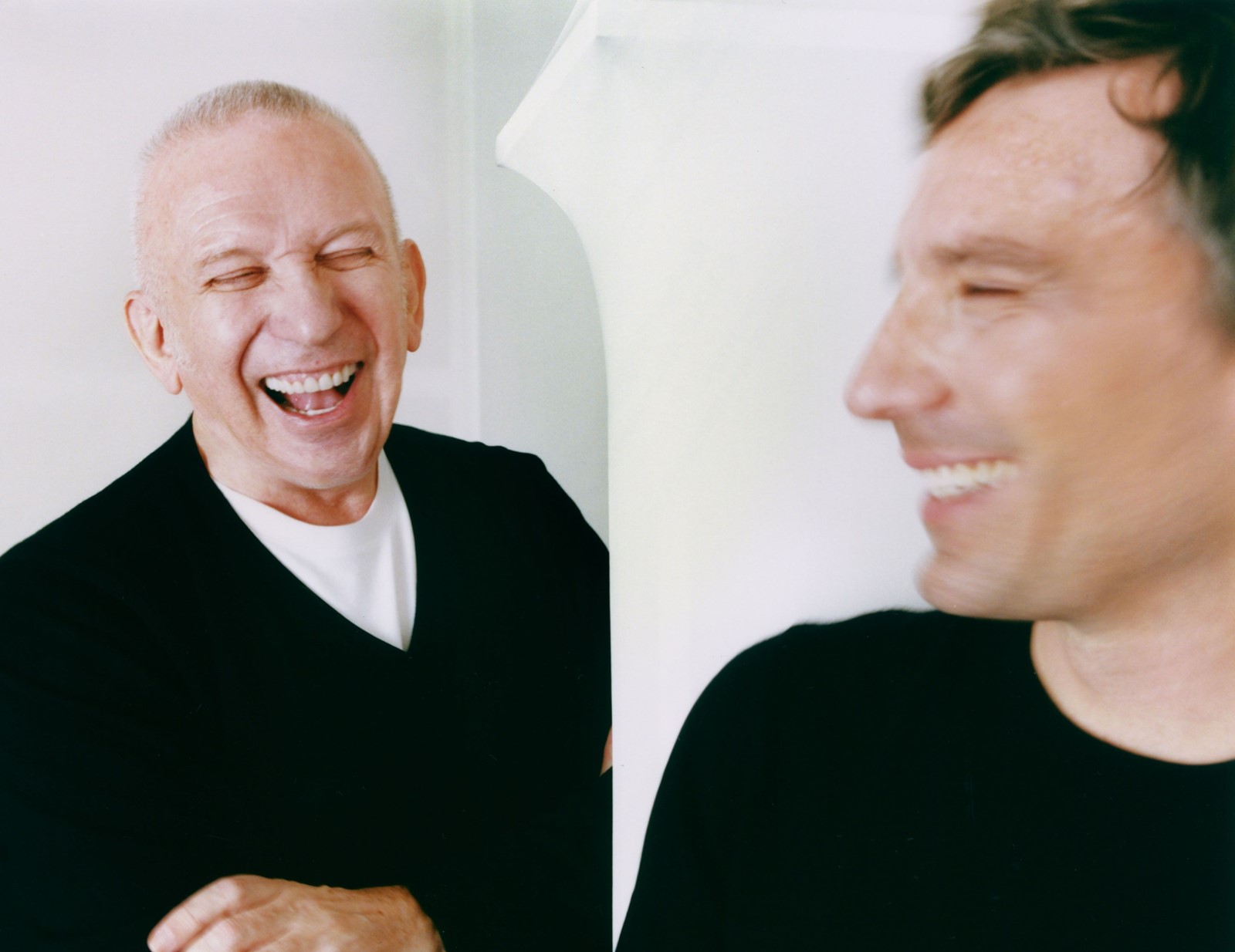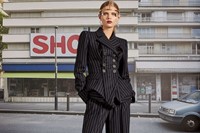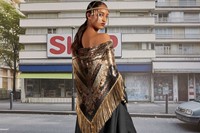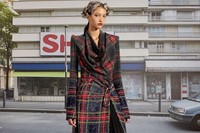It’s generally difficult to pin down a designer two weeks before their show. When said show is their debut haute couture collection, and you’re pinning down not only one designer but two – the first a much-feted and in-demand young talent, the second one of the most influential designers of our time – the difficulty should multiply exponentially. And yet capturing Jean Paul Gaultier and Julien Dossena in a room together proved shockingly easy – albeit with the caveat that Monsieur Gaultier had to exit sharpish for a flight to Berlin and Monsieur Dossena had a pressing appointment to cast said forthcoming show.
Nevertheless, they were both seated on a blush black velvet sofa in the couture salon of Maison Gaultier – a former ribbon factory, boxing hall and nightclub – eating French galettes and American cookies, and talking about the forthcoming Gaultier show, designed by Dossena. Everything is under wraps, sort of – as much as it can be in a building humming with industry. Harassed atelier workers criss-cross in and out of the building’s lifts, elaborately-worked fabrics tucked under arms. There are embroideries happening on every floor, I am told, as well as figures assembling bijou-based garments that nod to Dossena’s day job as the head designer of Paco Rabanne. There is a Rabanne element to this show, which is fitting, because Gaultier himself knew the designer and also grew up in an era shaped by his designs. There was, in retrospect, a Rabanne spirit to Gaultier’s earliest success, his High-Tech collection of 1980, with tin cans and tea infusers worn as unconventional jewellery.
Gaultier approached Dossena because of his work for Rabanne, of course, where he has been creative director since 2014. “He respects the style of Paco Rabanne … But doing also his own,” Gaultier says. “He makes some extrapolations on creation that truly are very beautiful and convincing.” He ignited rumours by sitting front-row at the Autumn/Winter 2023 Rabanne show in March, alongside Amanda Lear. “It was fabulous because it was Rabanne, but not Rabanne at all,” says Gaultier. “He likes to see and to touch one style and to make it his own in some way, to make it in a new way. That was exactly what I was expecting.”
“That’s what always stuns me, looking at Jean Paul’s work, he’s talking of people and he’s expressing personalities and some communities that were never expressed before in the fashion field” – Julien Dossena
For Dossena, his response to the invitation to design Gaultier’s couture was “an exciting, super exciting proposition.” He responded yes, “like a child.” As well he should – the invite, one of the most genuine and altruistic gestures in current fashion, gives creatives the free reign to work with Gaultier’s couture ateliers – lauded for decades as some of the best in the business – and the house’s archives, encompassing some of the great fashion moments of the late 20th and early 21st century. And, accordingly, the results have become, within five seasons, a giddy and gleeful highlight of every haute couture week. Gaultier remixed, by Chitose Abe, Glenn Martens, Olivier Rousteing, Haider Ackermann and now Dossena.
“You know fashion, it’s always evolving, morphing always – I love morphing. So it’s from the view of different creators, I love that. And this is kind of very luxurious for me I think. I am lucky to have that possibility to have different visions and it makes me proud of them – and of me also at the same time.” He pauses, smiles that wide Gaultier grin. “I think it’s a little pretentious in some ways, the idea. Thinking if I have enough style that people can put something on my base, you know what I mean?” To hear Gaultier deprecate his impact on modern fashion is somewhat alarming, but charming at the same time – especially given that he oft isn’t afforded the credit due for his innovations. I remember being sat at the first of these remixed Gaultier shows, where Chitose Abe was the guest designer. As greatest hit after greatest hit tumbled out, you were struck by a simple thought: fuck. Gaultier did it all, before everyone else.
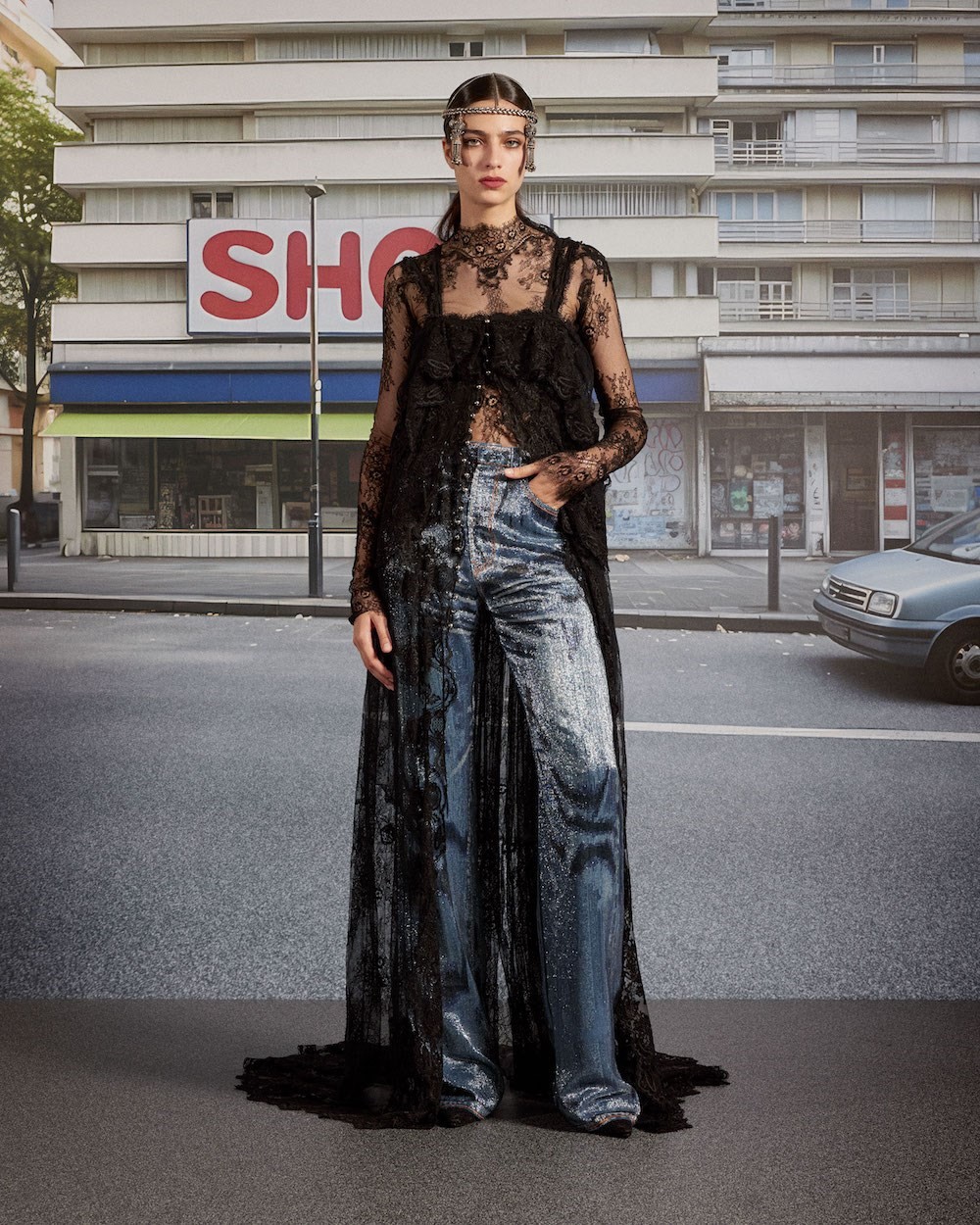
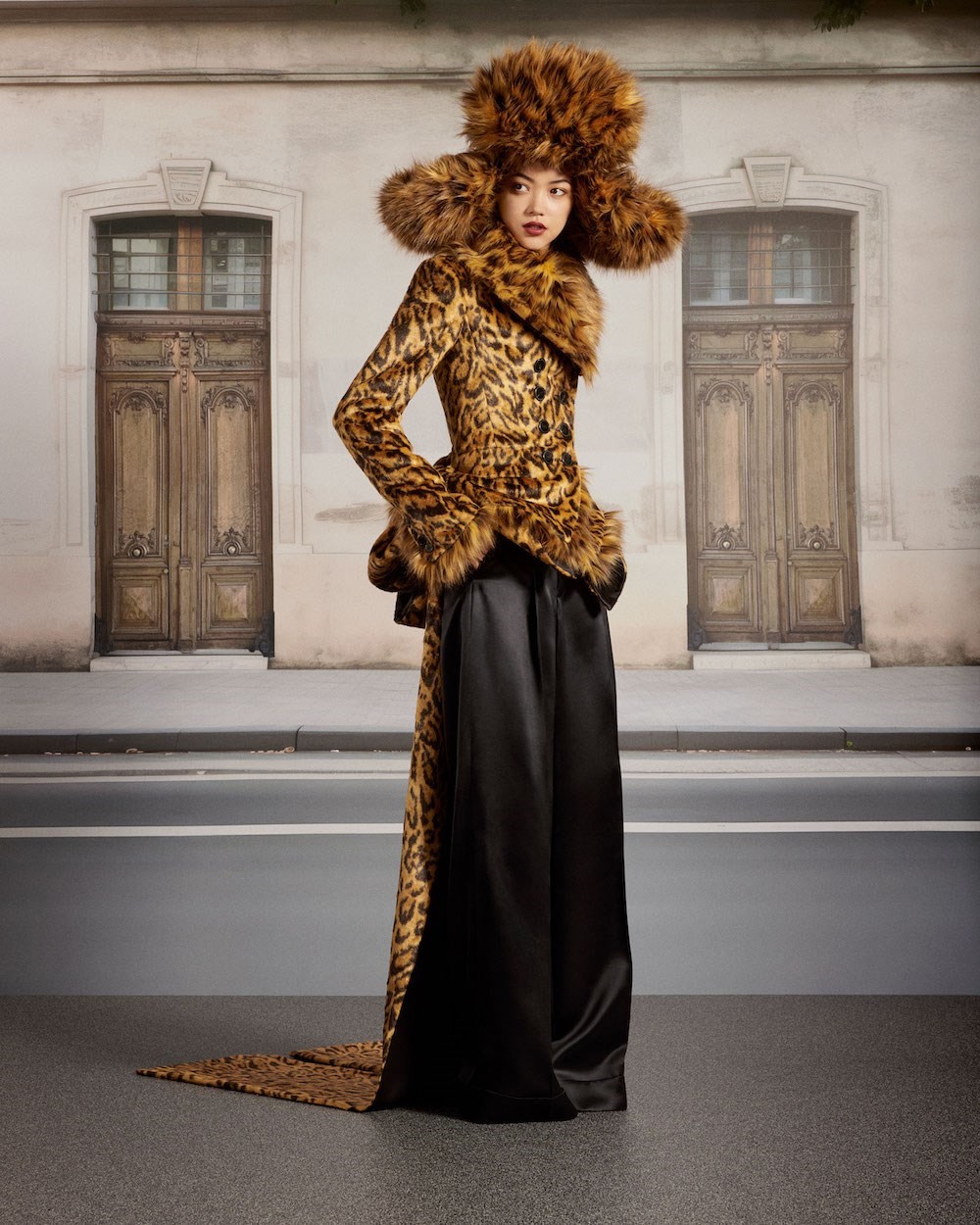
Gaultier himself laughs that off. “ I started my first show in ’76. Can you imagine? I was a baby and it was awful! Honestly – it’s good because few people saw it. Very few! Dossena, however, is looking at Gaultier’s greats. His own fashion identity was shaped, indirectly, by Gaultier – he trained under Nicolas Ghesquière at Balenciaga and Louis Vuitton, and Ghesquière got his start at Gaultier. “He spoke a lot when we were working together about you,” Dossena said, turning to Gaultier. “About the way that he learned his job with you by watching you and during the fittings and during research, taking the freedom of it and the generosity of it. And also – I make the link – but he said to me that you always have to be super sincere – that’s what he learned in working with you. Always to be super sincere, always to push your idea to the end.”
The Gaultier looks inspiring Dossena are representative of that. One point of reference is a Gaultier collection that stands as one of my personal favourites: his Autumn/Winter 1993 Chic Rabbis collection, a still-controversial show inspired by ultra-orthodox Jewish attire that most designers I speak to rave about. “We talked about it the first time we saw each other,” says Dossena. “The exact balance between homage and super chic, super strong style for everything is there. Modern, the easiness, that delicate, exquisite way of working on the men’s suit. So this was one starting point for everything.” Other collection references included La concierge est dans l’escalier (Spring/Summer 1988) with shawls knotted around off-the-shoulder blazers, and berets and jaunty polka-dot foulards for a hyper-Gallic look; and Gaultier’s famous cone-breasted Barbes velvet dress from 1984 – made, Gaultier and Dossena both confirmed, from millinery velvet, to hold the shape. There are plenty of other references too. “Everything is super modern and now,” says Dossena. “So I had a lot of work to narrow it down and to choose what I wanted to work on.”
“In the end it was really from those references to build the collection, it was really to talk about characters,” Dossena says. “Because that’s also what always stuns me, looking at Jean Paul’s work, he’s talking of people and he’s expressing personalities and some communities, some groups, some people that were never expressed before in the fashion field. And for me it’s as if you are in the street and you see the most beautiful and cool and exquisite people, with that bold way of expressing themselves. And that’s why I wanted to have those different types of characters all through the collection in order to pay homage, in the best way, to what I thought you did for the craft, for passion, that freedom and that self-expression.”
Two weeks later, the couture salon where we sit is transformed into Gaultier’s catwalk – two narrow tranches of chairs in near-darkness. The soundtrack is the horn beeps and footfalls of Parisian streets, with ensembles named after areas of Paris or its Metro stations. Switching between those locales, you see swapping and chopping and changing between Gaultier looks, collections, eras – with Dossena’s own identity and the heritage of Paco Rabanne mixed in as well – there is a special thanks in the show programme to ‘the spirit of Monsieur Paco Rabanne’. And he’s very present: one look, a crystal dress titled ‘Rive-Droite’ is connected, naturally enough, to ‘Rive-Gauche’, a grain de powder tailcoat, with a train of silver metal mesh. Another connects ‘Les Halles’ with ‘Châtelet’. It is a phenomenal collection that elicits a roar of approval from all – not least Gaultier himself.
Gaultier himself had seen nothing beforehand, besides the conversations he had with Dossena – and the hints, in our conversation, as to what he had been eyeing from Gaultier’s rich archives. “I left them to have the surprise,” Gaultier says. “That is my enjoyment, honestly, to be surprised and to see, ‘Wow. He did well!’ Maybe mixing different collections together – but at the end it’s something total. It’s not, ‘Oh, that [collection] and that one, and that one.’ It has to be something that shows another vision.” He smiles the Gaultier grin again. “So voîla, be free.” If there’s one oil rouge through all Gaultier, it’s surely that.
